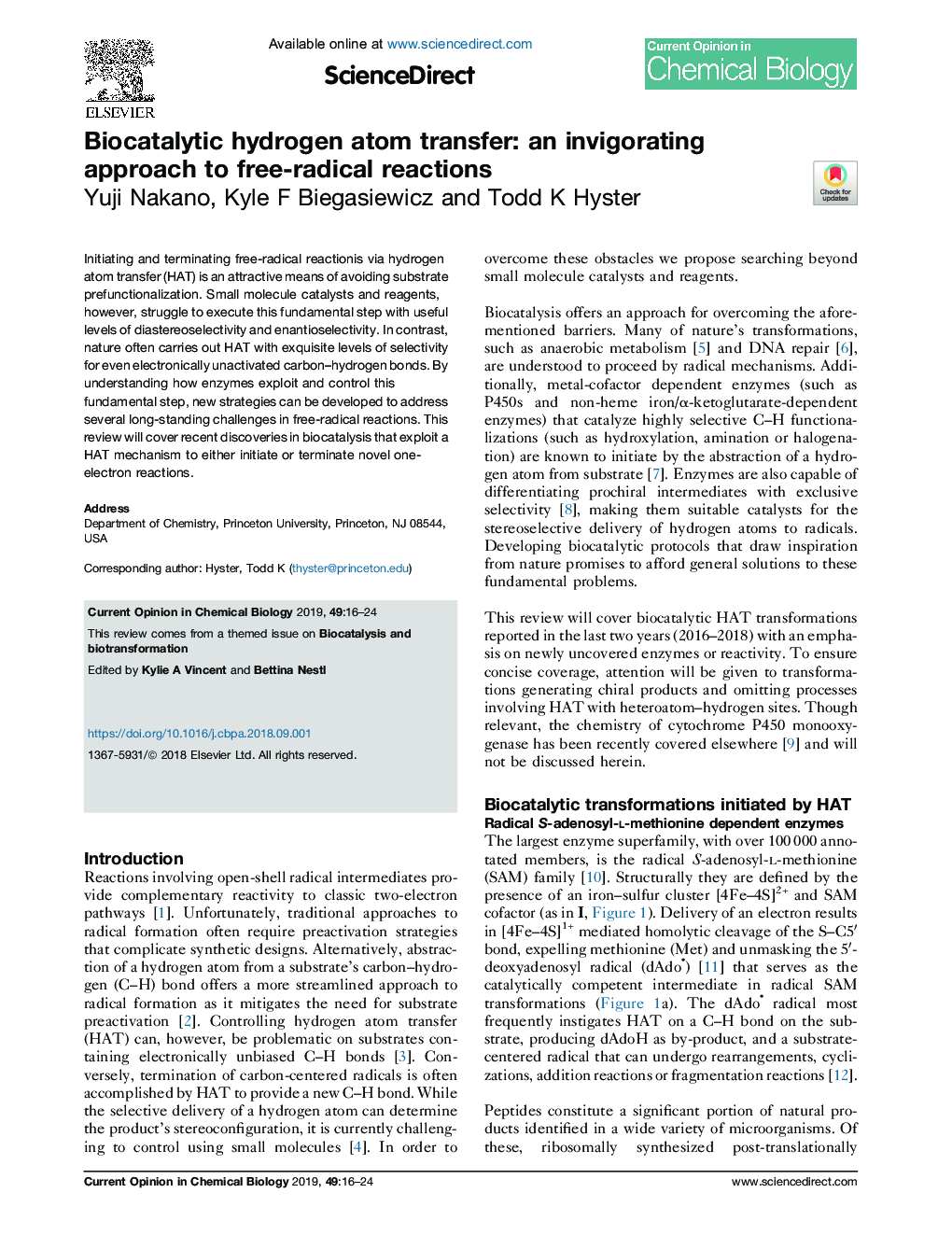| Article ID | Journal | Published Year | Pages | File Type |
|---|---|---|---|---|
| 11027304 | Current Opinion in Chemical Biology | 2019 | 9 Pages |
Abstract
Initiating and terminating free-radical reactionis via hydrogen atom transfer (HAT) is an attractive means of avoiding substrate prefunctionalization. Small molecule catalysts and reagents, however, struggle to execute this fundamental step with useful levels of diastereoselectivity and enantioselectivity. In contrast, nature often carries out HAT with exquisite levels of selectivity for even electronically unactivated carbon-hydrogen bonds. By understanding how enzymes exploit and control this fundamental step, new strategies can be developed to address several long-standing challenges in free-radical reactions. This review will cover recent discoveries in biocatalysis that exploit a HAT mechanism to either initiate or terminate novel one-electron reactions.
Related Topics
Physical Sciences and Engineering
Chemistry
Chemistry (General)
Authors
Yuji Nakano, Kyle F Biegasiewicz, Todd K Hyster,
